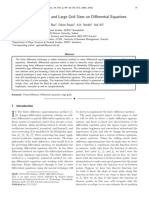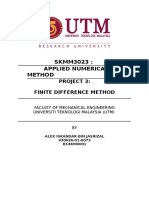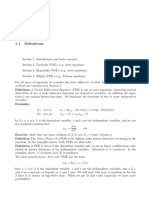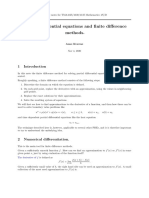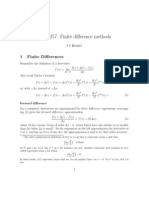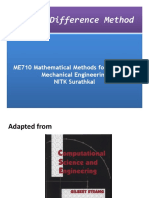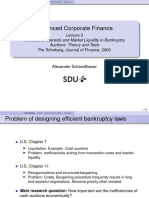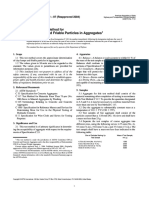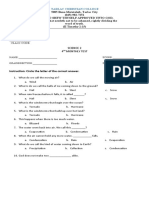0% found this document useful (0 votes)
73 views16 pagesLectures14 Finitedifference
This document discusses numerical methods for solving partial differential equations (PDEs), specifically finite difference methods. It introduces the explicit, implicit and Crank-Nicolson finite difference methods for discretizing the fundamental option pricing PDE. These methods allow approximating the solution of the PDE on a lattice by replacing derivatives with finite differences.
Uploaded by
e.mahler1997Copyright
© © All Rights Reserved
We take content rights seriously. If you suspect this is your content, claim it here.
Available Formats
Download as PDF, TXT or read online on Scribd
0% found this document useful (0 votes)
73 views16 pagesLectures14 Finitedifference
This document discusses numerical methods for solving partial differential equations (PDEs), specifically finite difference methods. It introduces the explicit, implicit and Crank-Nicolson finite difference methods for discretizing the fundamental option pricing PDE. These methods allow approximating the solution of the PDE on a lattice by replacing derivatives with finite differences.
Uploaded by
e.mahler1997Copyright
© © All Rights Reserved
We take content rights seriously. If you suspect this is your content, claim it here.
Available Formats
Download as PDF, TXT or read online on Scribd
/ 16



